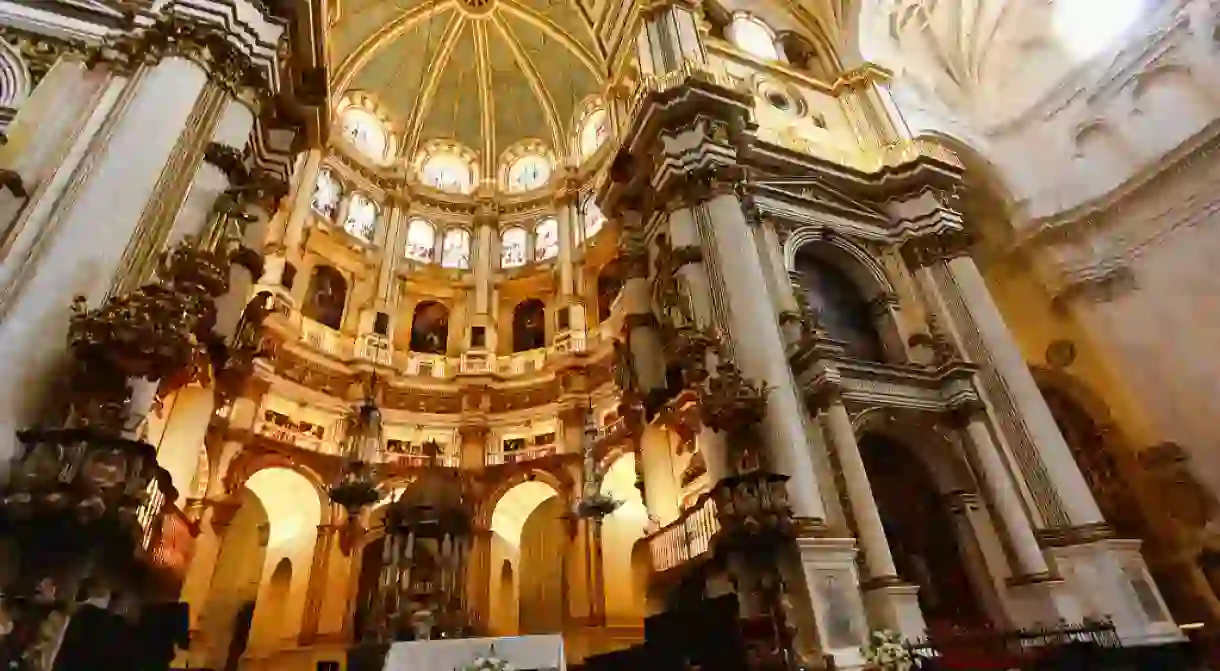A Brief History of Granada Cathedral

Though it took over 180 years to build, Granada’s magnificent cathedral is still not finished: its original plans included two 80-metre towers but only one was ever started and even that remains half-finished. Nevertheless, its harmonious blend of architectural styles make it one of southern Spain’s greatest monuments.
Its first chief architect was Enrique Egas, who designed a cathedral in the Gothic style and oversaw construction of the foundations between 1523 and 1529. As with many other great cathedrals in Andalusia, the first stones of Granada’s were laid on the site of the city’s former mosque – a symbolic repudiation of the culture and faith that had dominated southern Spain for centuries. In 1529, Egas was replaced by Diego of Siloam, a Burgos-born sculptor and architect who had been influenced by the Italian Renaissance style on a trip to Naples in 1517. Siloam’s great challenge was to build a Renaissance cathedral on the Gothic foundations laid by his predecessor, a challenge he worked to overcome for the next four decades before his death in 1563.

After Siloam’s death, a succession of prestigious architects – including Juan de Maena, Juan de Orea and Ambrosio de Vico – worked on the Renaissance cathedral, but their predecessor’s ingenuity had already left its mark on the building. Siloam planned five naves instead of the more customary three and a circular Capilla Mayor, or main chapel. This beautiful chapel is home to some of the cathedral’s most important artworks, including effigies of King Ferdinand and Queen Isabella (the Catholic monarchs who seized Granada from the Moors in 1492) by Granadino sculptor Pedro de Mena. Busts of Adam and Eve by de Mena’s distinguished teacher, the (also Granadino) architect and sculptor Alonso Cano also have pride of place. Along with Siloam’s other great architectural achievement in Granada, the church of the monastery of Saint Jerome, his work on the city’s cathedral is considered one of the finest examples of the Renaissance style in Spain.

As great as Siloam’s individual achievements are, though, Granada’s cathedral impresses more with its mix of architectural styles than with the work of a single architect. In the early 1650s – 130 years after Egas had laid the building’s foundations – notoriously foul-tempered local boy Alonso Cano was made chief architect by King Philip IV of Spain. His greatest contribution to the project was the towering facade, into which he introduced Baroque elements that had hitherto been lacking. Cano was still working on the facade when he died in 1667, but it was built according to his designs and later elaborated with the addition of sculptures by renowned artists Pedro Duque y Cornejo and Miguel Verdiguier. Cano – a real Renaissance man – was a gifted painter as well as an architect, and some of his works can be seen on the impressive retablo in the Trinity Chapel. In addition, there is an important sculpture of the Virgin Mary by Cano in the sacristy.
Cano was also quite a character and had a temper that he could seldom control. According to legend, he once smashed to pieces a statue of a saint he was trying to sell when the buyer refused to pay the price Cano demanded – an act for which he could have been executed. Thankfully he got away with this spontaneous outburst and was able to leave his mark on his hometown’s great cathedral – a Renaissance masterpiece built on Gothic foundations that is still not fully complete.
Catedral de Granada, 5 Gran Via de Colón, Granada, Spain, +34 958 22 29 59














